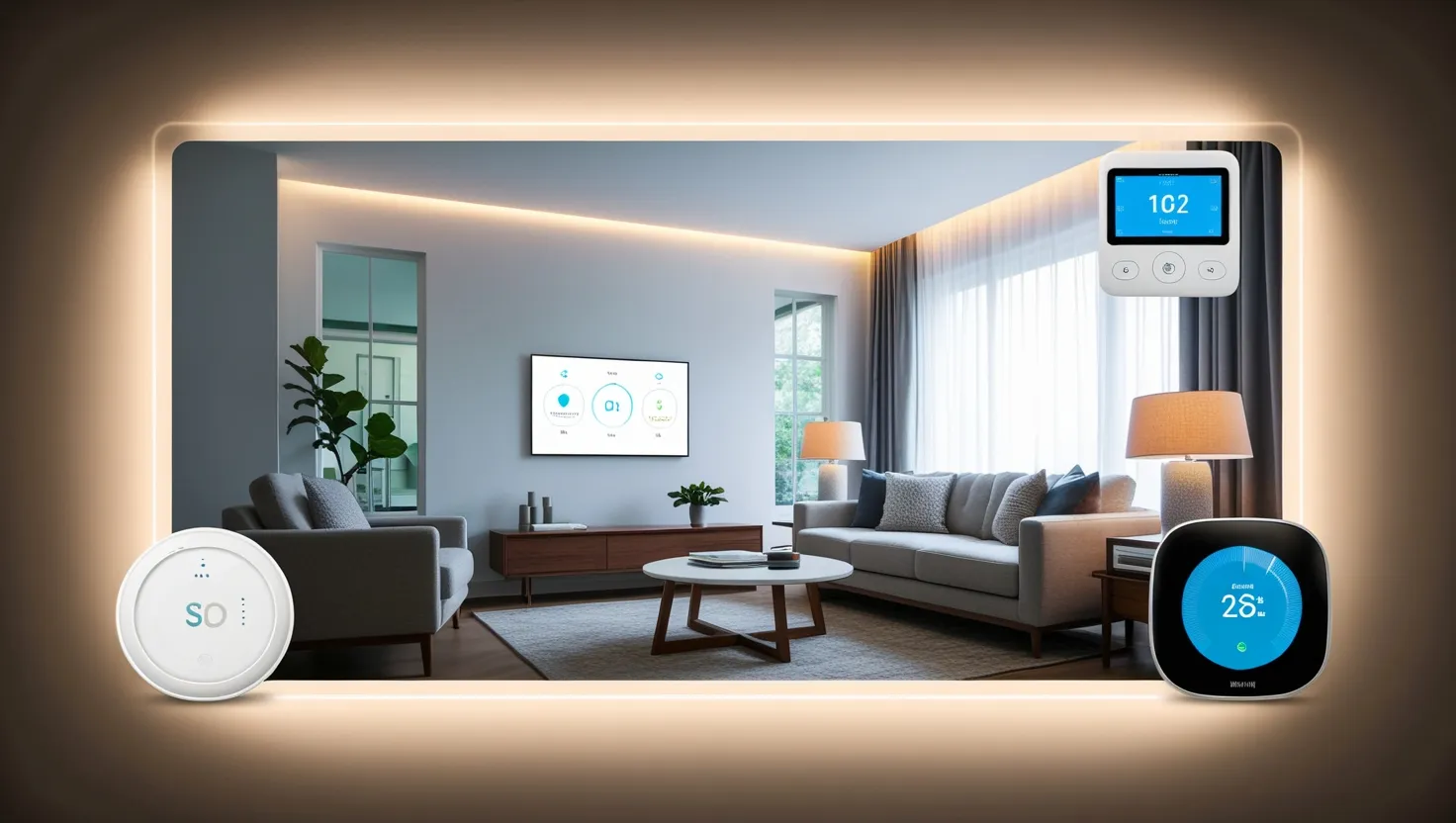As I stand in my living room, surrounded by the quiet hum of technology, I often wonder how far we’ve come in making our homes not just smarter, but also more energy-efficient. The journey to a greener, more sustainable home is paved with innovative smart home upgrades that are as clever as they are convenient.
Let’s start with one of the most significant energy guzzlers in any home: the heating and cooling system. Smart thermostats have revolutionized the way we manage our indoor climate. These devices don’t just adjust the temperature; they learn your habits and preferences over time. Imagine a thermostat that knows you leave for work at 8 AM every day and automatically lowers the temperature to save energy. It’s like having a personal climate assistant that ensures your home is neither too hot nor too cold, but just right.
One of the lesser-known facts about smart thermostats is their ability to integrate with weather forecasts. They can anticipate a cold front or a heatwave and adjust the temperature accordingly, ensuring that your home remains comfortable while minimizing energy consumption. This proactive approach to heating and cooling can save you up to 15% on your energy bills, which is no small feat.
Smart lighting is another area where technology has made significant strides. Gone are the days of forgetting to turn off the lights or using energy-hungry incandescent bulbs. Smart lighting systems can detect occupancy and adjust brightness based on the natural light available. For instance, if you’re in a room with plenty of sunlight, the smart lights will dim or turn off to conserve energy. This not only saves you money but also extends the life of your light bulbs, which can last up to 15 times longer than traditional ones.
But what about those pesky devices that continue to draw power even when they’re turned off? This phenomenon, known as “phantom energy draw,” can account for a surprising amount of your energy consumption. Smart power strips are the solution to this problem. These strips can detect when a device is in standby mode and cut off power completely, eliminating the unnecessary energy drain.
Water conservation is another critical aspect of sustainable living, and smart irrigation systems are at the forefront of this effort. These systems use sensors to monitor soil moisture and weather conditions, ensuring that your lawn and garden receive exactly the right amount of water. No more overwatering or underwatering; just a perfectly hydrated landscape that saves you money on your water bill.
Monitoring your energy usage in real-time is crucial for making informed decisions about your energy consumption. Energy monitoring devices provide you with detailed data on which appliances and devices are using the most energy. This visibility allows you to identify patterns of high usage and take steps to mitigate waste. For example, you might discover that your old refrigerator is a major energy hog and decide to replace it with a more efficient model.
Smart window treatments are another often-overlooked but highly effective way to regulate indoor temperature. These treatments can automatically adjust to let in natural light and heat during the winter or block it during the summer. This passive approach to temperature control can significantly reduce your reliance on heating and cooling systems, saving you both energy and money.
When it comes to appliances, the smart revolution has transformed even the humblest of devices into energy-saving powerhouses. Smart appliances can be controlled remotely, allowing you to turn them on or off from your phone or schedule their operation during off-peak hours when energy rates are lower. This level of control not only saves energy but also adds a layer of convenience to your daily life.
At the heart of any smart home is the hub – the central control system that ties everything together. Smart home hubs allow you to manage all your devices from a single interface, making it easier to monitor and control your energy usage. Imagine being able to adjust your thermostat, turn off the lights, and check your energy consumption all from one app.
Smart meters are another tool that can help you become more energy-conscious. These meters provide real-time data on your energy usage, helping you understand where you can cut back. By seeing the immediate impact of your actions, you’re more likely to make changes that lead to significant energy savings.
Finally, there’s the potential of integrating solar power into your smart home system. Solar panels can generate clean energy, which can then be used to power your home. Smart home systems can optimize this energy usage by storing excess energy in batteries for later use or selling it back to the grid. This integration not only reduces your carbon footprint but also saves you money on your energy bills.
In conclusion, the path to a more energy-efficient home is paved with a variety of smart home upgrades. From smart thermostats that learn your habits to smart irrigation systems that conserve water, each of these technologies offers a unique way to reduce your energy consumption. By embracing these innovations, you’re not just saving money; you’re contributing to a more sustainable future for all of us. As I look around my home, I’m reminded that the future of energy efficiency is already here, and it’s smarter than ever.






